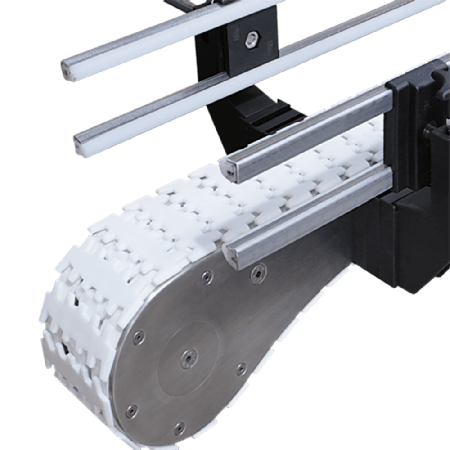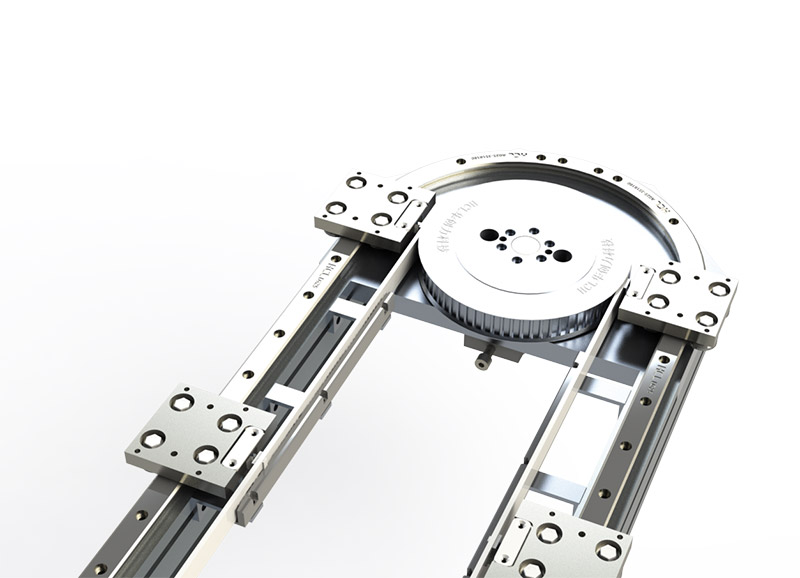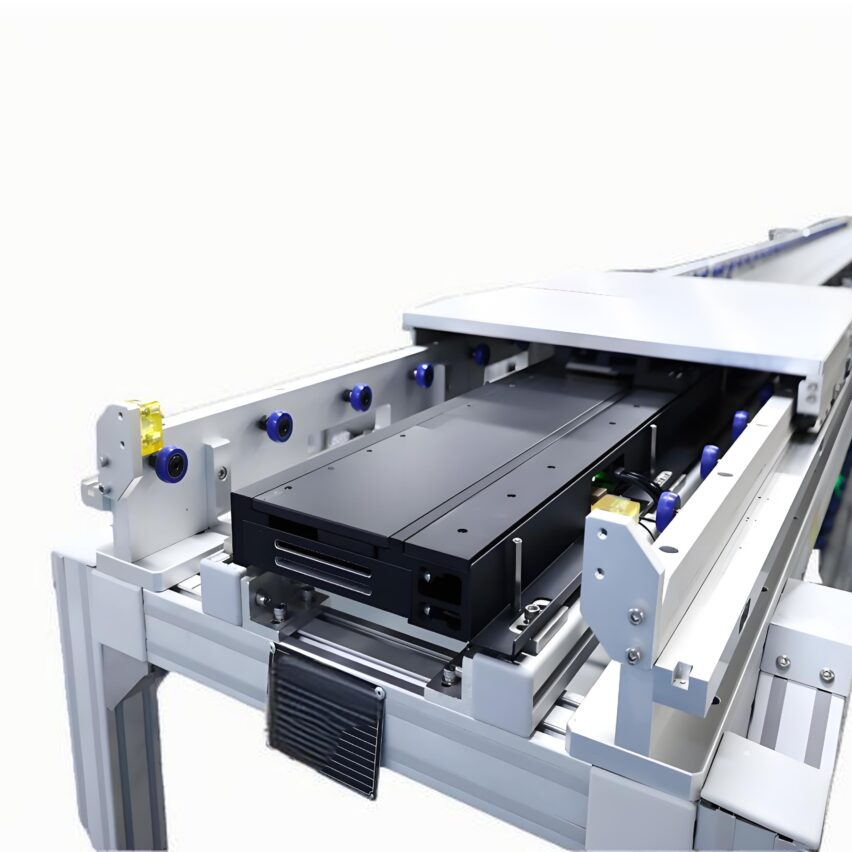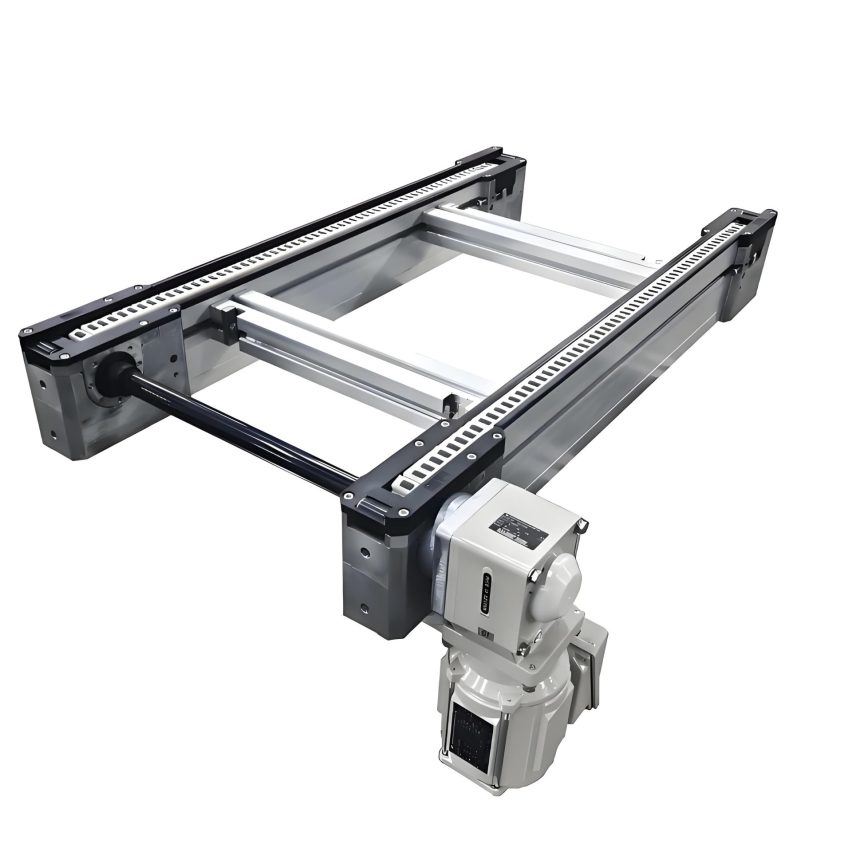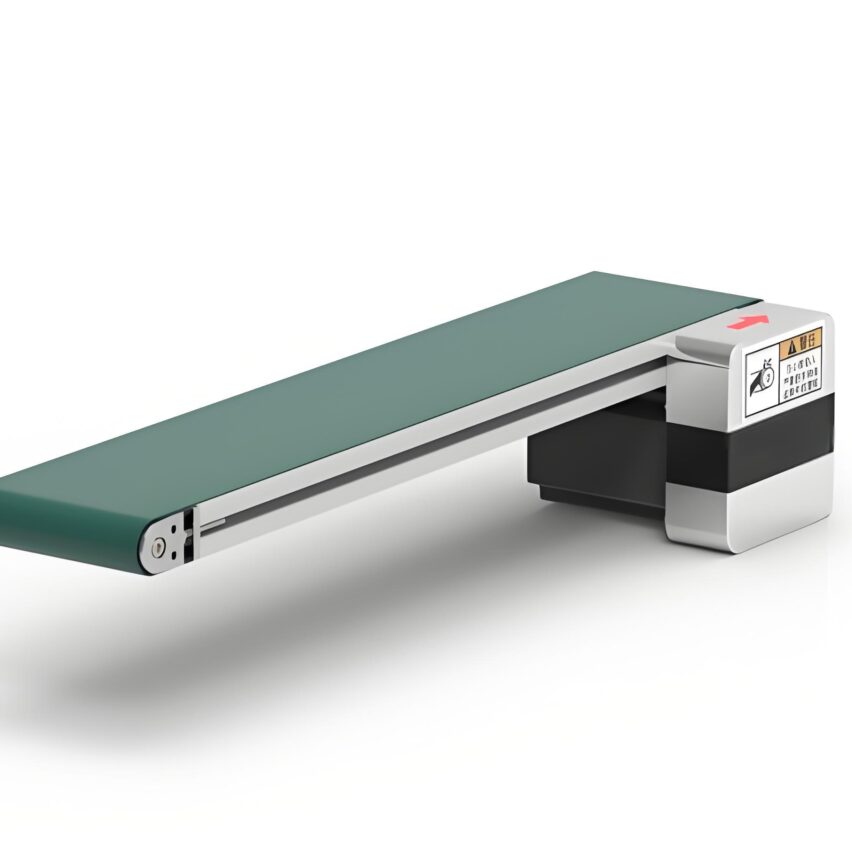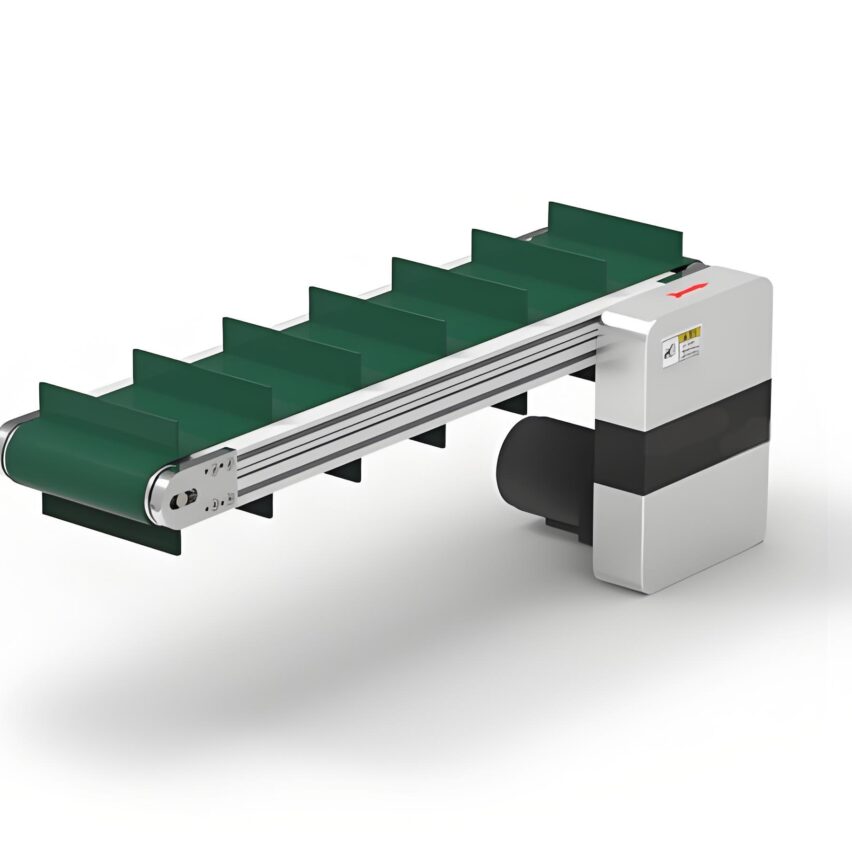In an era when soaring industrial land costs go hand in hand with the need for flexible production, theDouble-deck speed chain conveyor line through 3D design technologyIn addition, it realises the synergistic reconstruction of physical space and digital space - it is not only the carrier of material delivery, but also the nerve vein to open up the "last kilometre" of intelligent manufacturing.
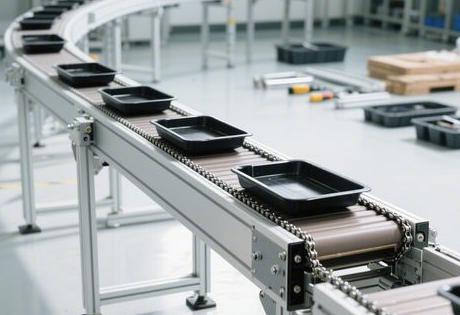
I. Spatial Folding: A 3D Design-Driven Vertical Revolution
Three-dimensional architecture with double-layer multiplier chainsDemonstrate disruptive value in 3D virtual environments:
- upper production layer: 3x chain (D/d=2) to6m/min workpiece speedConveying workpieces with a speed increase of 200% compared to the basic chain to meet the high beat demand such as automotive welding;
- lower return layer: Closed-loop return of empty workpiece plates driven by independent motors.Save 50% flat footprintThe release of precious space resources for microfabrication;
- Precision co-ordination of loadersOptimise the pneumatic jacking trajectory based on 3D motion simulation, with an error of ≤0.5mm, to solve the traditional manual handling 15% efficiency loss.
personal viewpoint: Traditional designs rely on physical prototypes for debugging, while the3D digital twinThe dynamics of the transfer machine can be simulated in a virtual environment to avoid the risk of mechanical interference with the 68% in advance - a strategy that is rewriting the rules for the delivery of non-standard equipment by exchanging computing power for time.
II. 3D Design Enablement: A Precise Leap from Virtual to Reality
1. Core breakthroughs in parametric modelling
Built with CAD/CAE softwareAdjustable Digital Models::
Image Codegraph TB A[Parameter input] --> B(Workpiece plate size) A --> C (height of line body) A --> D (Doubling Ratio) B&C&D --> E{{3D Dynamic simulation}} E --> F[Output optimal structural solutions]▲ Parametric Driven Design Process
- Link library modularityPre-set 200+ kinds of standard chain link 3D models, support 1 hour output of production line restructuring scheme;
- Gravity Field Simulation: Verify that the deformation of the support column is ≤0.3mm when conveying 1.2 tonnes of car parts to avoid the risk of overloading.
2. 3D printing technology plus
- Prototyping cycle compression: Reduced 3D printing cycle time from 15 days to 3 days for complex transfer mechanism parts;
- Lightweight structural innovations: The topology optimised design results in a weight reduction of 40% for the aluminium alloy frame and a reduction in energy consumption of 22%.
III. Industry empowerment: cross-border applications of 3D design unlocking
realm 3D Design Breakthrough Points Effectiveness Enhancement 3C electronics Anti-static work plate ±90° rotation module dynamic simulation AOI False Judgement Rate ↓90% automobile manufacturing Heavy duty chain link stress map analysis 1.5 tonne part deflection <1mm biomedical Virtual assembly of UV sterilisation modules with seamless guide rails Microbial residue <0.05CFU/cm² food processing Selection of Temperature Resistant Materials for Thermal Field Simulation 150°C operating downtime ↓65% Exclusive data: After the introduction of 3D design in an enterpriseTrial cost reduction 47%, but warning: off-standard modules that have not been virtually verified have actual failure rates 300% higher than simulation predictions - the error gap between the digital and physical worlds still requires vigilance.
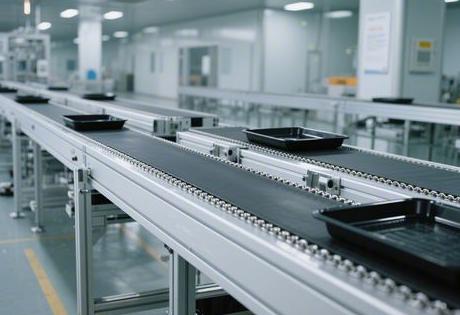
IV. Intelligent control: data flow-driven conveyor nerves
1. Three closed-loop control system
- tacho loop: Inverter compensates for current fluctuations, speed fluctuations ≤ 5%;
- position loop: RFID positioning timing error ≤ 0.1s;
- stress ring: Real-time monitoring of the deformation of the support column and automatic speed reduction by 0.3mm over the limit.
2. Innovations in predictive maintenance
- Digital Twin Fault Extrapolation: Predicts the risk of sprocket backlash >0.3mm based on torque data with 2 weeks advance warning;
- Environmental Adaptive Modelling::
- Sandy environment: lithium grease thin layer application programme (excessive lubrication leads to failure rate ↑40%);
- Clean room: Positive pressure dust control system to keep fine dust <1000pcs/m³.
V. The Golden Rule of Maintenance for a Ten-Year Life Span
3D Assisted Maintenance SystemAchieve precision conservation:
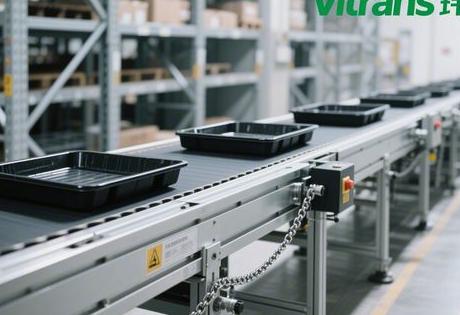
- Magnetic scraper trajectory optimisation: 3 times more efficient cleaning in dusty environments;
- 3D monitoring of carbon brush wear: Thickness <2mm automatically triggers the replacement command;
- Lubricant volume simulation: Precise calculation of the amount of grease injected into the tooth gap to avoid wastage.
counter-intuitive discovery: 3D thermal field analysis shows thatCapillary adsorption of grease at humidity >70%Instead, it accelerates wear - dry lubrication + regular baking is the long term solution.
Self-questioning: penetrating the technological fog
Q1: Why 3D design can reduce the cost of 47% trial production?
A: Virtual authentication eliminates hidden risks:
- pre-testing of interference: Early detection of mechanical structural conflicts in 68%;
- Dynamic Load Simulation: To avoid chain breakage caused by overload deformation of the support column;
- Ergonomics optimisation: Virtual commissioning shortens worker training cycles 40%.
Q2: How to solve the conflict between heavy load and speed up?
A: 3D simulation gives a balanced solution:
- tiered speed-up strategy: 3x speed (6m/min) on straight sections, reduced to 1.5x speed on corners to prevent tailgating;
- Composite material applications: Engineering plastic rollers (Noise Reduction 27%) for light load areas and switching alloy steel sprockets for heavy load areas;
- Hydraulic cushioning optimisation: Impact attenuation of 60% by hydrodynamic simulation.
The competitive nature of the factory of the future isProduct of "spatial efficiency x data accuracy"--We need to be even more sober when 3D design compresses the cost of trial and error for a two-layer multiplier chain to 1/5th of the cost of traditional methods.A perfect model of the virtual world must be hardened by the law of entropy increase in the physical world. Those 0.01mm assembly tolerances ignored in simulation may trigger exponentially amplified system risks in actual operation. The true meaning of intelligent manufacturing is not in the peak duel of technical parameters, but in the delicate balance between digital and physical bite.
Key Technical Parameters of Double-layer Speed Chain Conveyor Line
parameter category Standard range/characteristics note Line width 250-900mm Support for customised designs Line Height 500-1000mm Adjustable range to cover multiple scenarios Conveying speed 2-20m/min frequency conversion octave ratio 1.5-3 times D/d diameter ratio decision Maximum load 200-2000kg Depends on material selection position accuracy ≤0.5mm Pneumatic jacking mechanism to achieve Power Supply Configuration Single-phase 220V/three-phase 380V Adaptation to different power environments
The 3D revolution of double-deck multiplier chain conveyor lines: the path of convergence between space folding and intelligent manufacturing
Related news
No products found
top
Wei Chuang Conveyor Line--The Common Choice of Global Top 100 Enterprises
Menu
Menu
Menu
Menu
Menu
Get the latest from the Fabrik newsroom




